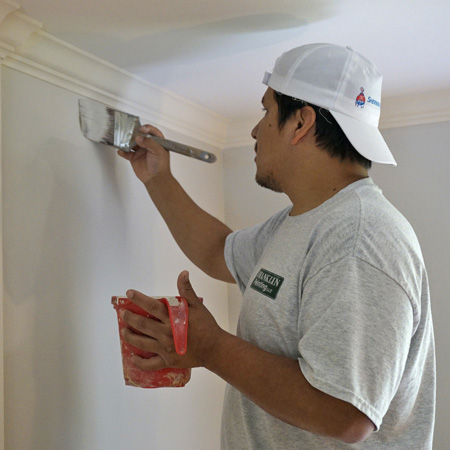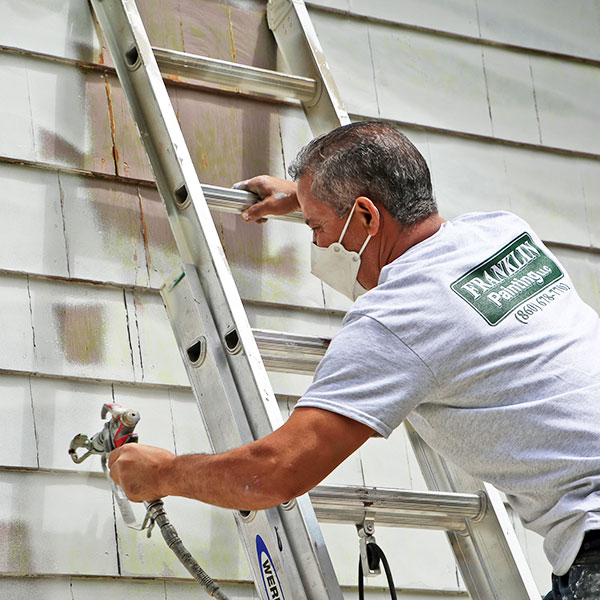Weather conditions can affect the quality of interior and exterior painting projects, though in different ways. When the question is, can you paint in winter, the answer is yes, but only in certain conditions. In previous times, painting home exteriors in cold winter climates was unheard of. These days, the possibilities have opened up significantly. Fewer weather parameters exist for interior painting, but there are still things to consider. Read on for deeper insights into painting in the wintertime.
 Exterior Painting in Winter
Exterior Painting in Winter
The life expectancy of even top-quality exterior painting can be compromised in certain temperatures when you paint in winter.
Weather conditions before and after the painting is done come into play. Neither the surface nor the air temperature should fall below 35ºF for at least 36 hours after paint is applied. Otherwise, the paint won’t sufficiently cure. Also, by the time spring arrives, unsightly bumps and bubbles will likely ruin the paint finish.
Drying time in winter takes longer when it’s cool outside compared to when it’s sunny and warm. When paint stays lingeringly wet, the surface ends up attracting dirt, debris, and insects that get stuck and dried into the paint. The ideal temperatures for exterior painting are between 60ºF and 85ºF, though the type of paint makes a difference. For example, the best time for exterior painting with oil-based paint is between 45ºF and 90ºF.
For latex paint, best results are produced when the temps are between 50ºF and 70ºF. Always check your paint can for the optimal temperatures for painting.
The Effects of Humidity on Paint Finishes
The moisture in the air is an important consideration when it comes to interior and exterior painting in winter or anytime. These conditions can effect the quality of your paint finishes. Outside, water vapor forms on freshly painted surfaces when the humidity level is high. The ideal humidity level for painting home exteriors is from 40% to 70% max. The following are among the possible consequences of painting when humidity levels are too high:
• The paint may not properly adhere to the surface, which results in bubbling of the paint and, eventually, peeling.
• If you live in an area with high humidity, your paint could show unsightly evidence of leaching. Leaching is white or brown discoloration in the paint.
• The protective qualities that exist in paint could be compromised in high humidity. What happens is that the moisture in the air hinders the ability of the paint’s film layer to develop as needed for a beautiful, durable finish.
Interior Painting in Winter
Take note of the humidity levels recommended, above, because they apply to interior painting. Winter weather, otherwise, doesn’t necessarily need to be prohibitive to interior painting. The biggest concern is ventilation, which can create the complication of needing to leave windows open during times when cold weather is extreme.

Contact Franklin for Painting in Winter or Anytime
Yes, you can paint in winter within certain parameters, but why not take off limitations by contacting Franklin Painting LLC?
Our qualified professionals are experienced teams with extensive training and expertise that can be relied upon for producing gorgeous results.
Get in touch today! Call us at 877-646-7774 or visit our website.

Frank Campanelli, the esteemed founder of Franklin Painting LLC, has been leading the company since 1986. He takes immense pride in the stellar reputation his dedicated team has built by consistently delivering top-notch service to each customer.

 Exterior Painting in Winter
Exterior Painting in Winter